Viewing notes July-August 2015
Some brief comments just to catch up with recent viewing I haven’t been able to cover in more detailed posts:
Horror
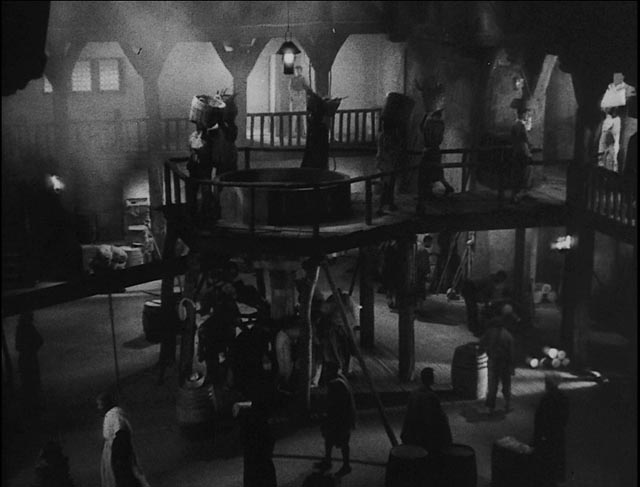
White Zombie (Victor Halperin, 1932)
This poverty row horror by the Halperin Brothers (director Victor and producer Edward) has always had a mixed reputation, and yet it survives as one of the most poetically atmospheric pre-Lewton horror films. Bela Lugosi, whose career was decidedly rocky after briefly attaining stardom in Universal’s Dracula the previous year, here has one of his finest roles as Murder Legendre, the sinister ruler over a horde of zombie slaves on a small Caribbean island. While some of the performances are certainly weak (particularly Madge Bellamy as the object of his desire), Arthur Martinelli’s cinematography is rich in shadows, with Halperin staging some impressive sequences – the interior of the sugar factory where the dead-eyed zombies toil away, occasionally falling into the machinery with no one paying any attention, is particularly striking. There’s also an imaginative sequence set in a bar in which, as romantic lead Neil Parker (John Harron) gets drunk, everyone else is seen only as shadows cast on the wall behind him, a moody effect harking back to German Expressionism.
Halperin never again achieved this kind of visual power, although Supernatural, made the next year with Carole Lombard and Randolph Scott, is not without interest. White Zombie, very loosely based (uncredited) on William Seabrook’s non-fiction account of voodoo The Magic Island (1929), was barely noticed, or quickly dismissed, on its release in 1932, yet it single-handedly established the rules of the classic (pre-Romero) zombie story – from the Val Lewton/Jacques Tourneur I Walked With a Zombie (1943) to John Gilling’s The Plague of the Zombies (1966).
The Kino Blu-ray took a lot of flack for the excessive digital scrubbing of the transfer which gives it a thick waxy look with burned-out highlights, but the alternate “raw” transfer on the same disk, while showing all the dirt and scratches typical of an old, low budget print, has a nice film look with natural grain and good contrast. I haven’t seen the subsequent Roan Group Blu-ray from VCI, but that was reported to have a substandard encoding. The Kino edition has a commentary track by film historian Frank Thompson, while the VCI offers a commentary by Gary Don Rhodes, author of the comprehensive and authoritative White Zombie: Anatomy of a Horror Film (McFarland, 2001). After watching the Kino disk, I listened to both commentary tracks (the Rhodes was originally recorded for the 1999 Roan DVD edition, which I still have), and together they provide an impressive history of the production and appreciation of the movie. For a small film which languished for decades in the public domain, these two companies have lavished a lot of love on this pre-Code gem.
*
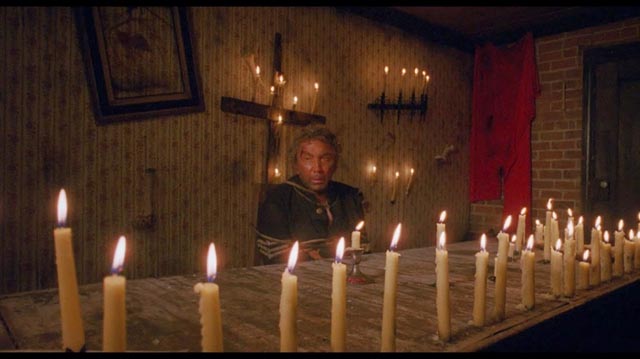
From a Whisper to a Scream (Jeff Burr, 1987)
While regional filmmaking (small productions made locally far from the industry mainstream) occasionally produces a rich slice of life like Eagle Pennell’s The Whole Shootin’ Match (1978), more often filmmakers opt for genre projects as a more likely route to some kind of commercial return for their efforts. Ohio-born Jeff Burr, who grew up in the small town of Dalton, Georgia, has built a career mostly on sequels (Stepfather 2, Leatherface, Pumpkinhead 2, Puppet Master 4 & 5), but back in 1987 he turned his hometown into a movie location-cum-studio for a horror anthology called From a Whisper to a Scream (retitled by its eventual distributor as The Offspring). Despite the low budget and a tight schedule (each of the movie’s stories was shot in a week), Burr and his partners managed to land a fairly impressive cast headlined by Vincent Price as Julian White, a local historian who tells the film’s four stories to a visitor who has ulterior motives. These stories, moving backwards in time from the present to the Civil War, reveal that something is definitely not right about this town: they feature murder and various forms of perversion, climaxing with the film’s most impressive narrative, a Children of the Corn-like story about the corruption of children orphaned in the War.
The cast features Susan Tyrrell, Clu Gulager, Rosalind Cash, Martine Beswick and Cameron Mitchell. Like most anthology movies, the stories are uneven, but Burr does well with the various time periods and gives the film a surprising polish considering his inexperience (he was just 24 when he made it) and limited resources. What makes the Scream Factory Blu-ray more significant than the movie itself is the extensive collection of extras which provide a detailed account of low budget regional filmmaking: two commentary tracks (one with Burr, the other with producer Darin Scott and co-writer C. Courtney Joyner); a feature-length documentary about amateur filmmaking in Georgia in the ’70s, which reveals the origins of Burr and his collaborators in teenage super-8 movie-making; and another feature-length documentary specifically about the making of From a Whisper to a Scream. It’s an impressive package.
*
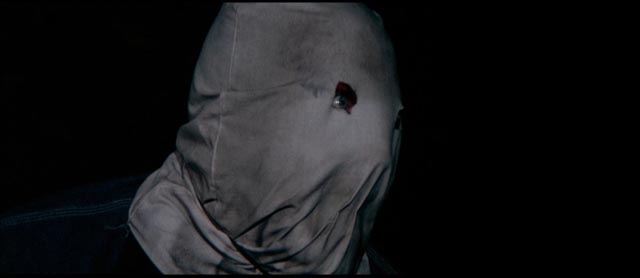
The Town That Dreaded Sundown (Charles B. Pierce, 1976)
Charles B. Pierce was another regional filmmaker, albeit one who managed to get his movies distributed by Samuel Z. Arkoff at American International. His first feature, The Legend of Boggy Creek (1972), was a docu-drama – “based on actual events” – about a kind of Sasquatch living in an Arkansas swamp. For a low-budget movie, it got quite a lot of promotion and did fairly well at the box office. I actually saw it in a theatre in 1973 and can recall being unimpressed (I see from my obsessive record-keeping that I gave it one-and-a-half stars). Pierce is probably best known for the film he made four years later, a somewhat more plausible account of actual events which occurred in the town of Texarcana, Arkansas, in 1946 just as things were beginning to return to normal after the War. A rapidly escalating series of attacks on young couples in and around the town created a panic which was never fully resolved as the killer was never caught.
Pierce managed to land a decent cast this time, headed by Ben Johnson as Captain J.D. Morales of the Texas Rangers, who’s brought in to lead the investigation, with Andrew Prine as local sheriff’s deputy Norman Ramsay. The film has a surprisingly effective period atmosphere considering the low budget, and Pierce stages the crimes efficiently. Although some of the action is a bit clumsy, other scenes are chillingly effective, particularly the attack on Helen Reed (Dawn Wells) and her husband in their house. The film is very well shot by cinematographer Jim Roberson and the hi-def transfer is impressive for a movie this old which was shot in just four weeks, much of it at night and in rain. In its structure and inconclusiveness, The Town That Dreaded Sundown is reminiscent of David Fincher’s Zodiac.
The Scream Factory Blu-ray has several extras, including a commentary by local historian Jim Presley (although the movie apparently represents the broad outlines of the case quite accurately, Pierce and screenwriter Earl E. Smith considerably embellished a lot of the details), and interviews with actors Andrew Prine and Dawn Wells and cinematographer Jim Roberson. Most substantially, the two-disk set includes an entire second feature (on DVD), also by Pierce: The Evictors (1979) is another period film (“based on real events”) centred on a big old house where bad things happen to people. The new owners, a young couple played by Jessica Harper and Michael Parks, are terrorized by a mysterious figure – unfortunately, the big twist when it’s finally revealed comes as no surprise as the solution of the mystery is pretty obvious quite early on. However, the cast is good (it also features Vic Morrow and Sue Ann Langdon), and once again Pierce manages to create a decent period atmosphere.
*
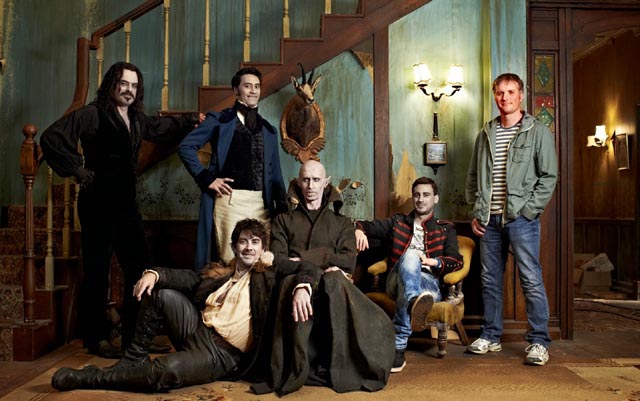
What We Do in the Shadows (Jermaine Clement & Taika Waititi, 2014)
This mockumentary from New Zealand is one of the funniest and most charming horror comedies to appear in years. A couple of young filmmakers are invited to come and document life in an old house inhabited by a group of vampires. These bloodsuckers live together for convenience, sharing expenses and chores, partying together, bickering over minor irritations, and trying to get along without alerting the surrounding community to their true nature (which becomes a problem when an irresponsible party guy is inadvertently turned and lacks the others’ long-nurtured restraint when it comes to putting the bite on people). There’s a loose improvisational feel and a mixture of slapstick and finely-tuned observational comedy (co-writers/directors/stars Jermaine Clement and Taika Waititi are best known for the comedy series Flight of the Conchords). What We Do in the Shadows is a refreshing surprise; it’s nice to discover that there are still original ways to treat the generally exhausted vampire genre. The Blu-ray contains additional scenes and video clips which are mostly just as funny as the feature itself.
*
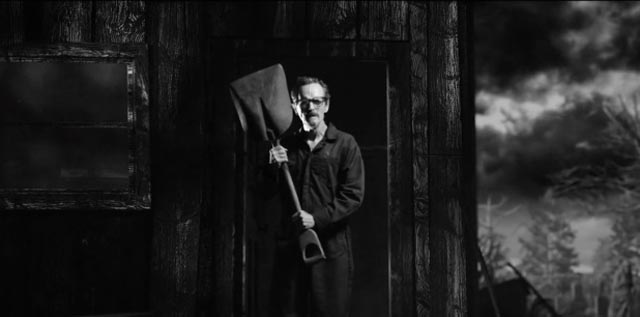
Hellmouth (John Geddes, 2014) & Septic Man (Jesse Thomas Cook, 2013)
These two Canadian features, both written by novelist Tony Burgess (best known for his experimental “zombie” novel Pontypool Changes Everything, which was adapted into Bruce Macdonald’s Pontypool in 2008) are real oddities which don’t seem to have received much distribution. Hellmouth, using visual techniques reminiscent of Robert Rodriguez’s Sin City, has dying cemetery caretaker Charlie Baker (Stephen McHattie, who also starred in Pontypool and appears as the town mayor in Septic Man) pressured to go and maintain a remote graveyard, despite the fact he just wants to go away and relax until he dies. Trouble is, his new assignment is actually located over the mouth of Hell. With echoes of the Orpheus myth, he is drawn into the netherworld in an attempt to save a woman … but despite the often striking visuals, the style tends to work against any real engagement with the story.
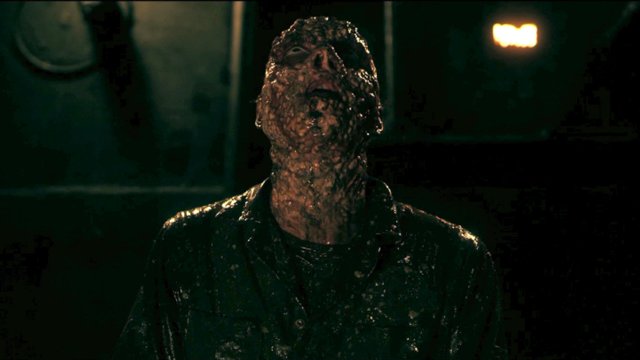
Septic Man, in contrast, works hard to be grungy and repulsive – and is generally more successful. Inspired by the contaminated water situation in the Ontario town of Walkerton a few years back, the film begins with its most disgusting sequence: a woman dying explosively in the filthiest bathroom ever put on film. Jack (Jason David Brown), a local water department worker, finds himself trapped in a cistern as the town is evacuated; surrounded by filth (including rotting bodies), Jack gradually succumbs to a horrific physical transformation as the contamination turns him into Septic Man, a rather pathetic figure. For most of the movie, he remains in the dark, disgusting cistern. The movie is ultra grimy and claustrophobic, but succeeds very well in its primary aim to be as repulsive as possible. An odd ambition, perhaps, but it certainly manages to be distinctively original.
*
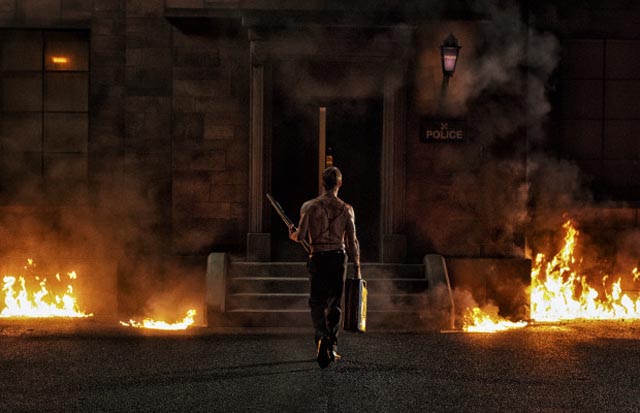
Let Us Prey (Brian O’Malley, 2014)
With its small-town police station under siege by a deadly force, this Scottish movie has echoes of John Carpenter’s Assault on Precinct 13. However, in this case the deadly force is inside, in the form of a prisoner known as Six, played by Liam Cunningham, who turns out to be the Devil himself come to claim souls. The protagonist is newly arrived constable Rachel Heggie (Pollyanna McIntosh), who tries to hold things together as everyone around her seems to go mad, becoming increasingly violent. Six has the power to reveal everyone’s innermost corrupt nature, releasing their worst impulses. The script by David Cairns and Fiona Watson is compact, giving the film’s handful of characters distinct personalities, and director O’Malley keeps things moving at a good clip, almost but not quite managing to conceal the fact that this small town is seriously under-populated. For all its violence, Let Us Prey is more or less a chamber piece, presenting a world which goes no farther than the station with its four police officers and six prisoners; this lack of scale prevents the film from becoming anything more than a sketch of the apocalypse, but within those limitations it’s quite effective.
*
Documentary

The Galapagos Affair: Satan Came to Eden (Daniel Geller & Dayna Goldfine, 2013)
It’s a documentary filmmaker’s dream to stumble across a rich trove of material which tells a previously unknown story. It’s all the more unusual for that trove to supply pretty much everything you need to tell the story. But that’s just what happened to Daniel Geller and Dayna Goldfine. Not only are there detailed diaries written by a number of the people involved; there are many photos and, more surprisingly, even home movies. All of which might be interesting in and of itself, but in this case it’s the story told which raises the find into a once-in-a-lifetime event. In 1929 a German doctor, Friedrich Ritter, abandoned his life and took off for a remote, uninhabited island in the Galapagos, taking along his lover Dore Strauch and what supplies they needed to set up residence in this little corner of a natural paradise.
As it turned out, a natural paradise isn’t necessarily the thing you might hope for, even if you’re driven by a rigid philosophy. Life was hard, and before long another couple, Heinz and Margret Wittmer, turned up on the island, lured there by press accounts of the adventure which Ritter had sent back home. With Margret pregnant, the pair assumed that Dr. Ritter would take care of them, an assumption which infuriated him. As if that weren’t bad enough, soon a mysterious woman calling herself Baroness von Wagner arrived with her two lovers. The Baroness had plans to take over the island and turn it into a resort and Ritter saw his paradise going the way of all real estate in the hands of a rapacious civilization. Mysterious disappearances, possibly murders, ensued and the dream completely disintegrated in only a few years.
The fact that we hear the actual words of these people (read by Cate Blanchett, Thomas Kretschman and Connie Nielsen among others) and see them playing out this drama both in photographs and movies makes The Galapagos Affair play like a long-forgotten pre-Code adventure movie (an Island of Lost Souls in which the monsters are all too human). Geller and Goldfine allow those voices to tell the story, enhancing the narrative only with new interviews with a number of subjects who are descended from people who eventually settled the island – people who, like Ritter, had wanted to escape the horrors of civilization. If the film has one clear theme, it is (as Buckeroo Banzai was wont to say) “remember, wherever you go, there you are.” For people born into a particular culture, escape from what has shaped them is all but impossible and the more aggressively they make the attempt, the more likely things are going to end badly.
*
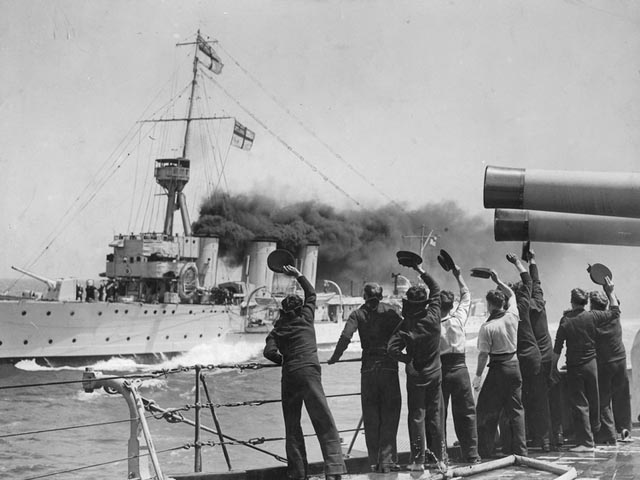
The Battles of Coronel and Falkland Islands (Walter Summers, 1927)
This remarkable film, released on Blu-ray by the BFI, may not strictly count as a documentary, but it comes close. Made by a filmmaker who had worked as a writer and director in silent films after serving in the British Army during the First World War, The Battles of Coronel and Falkland Islands is an account of the first British naval defeat in a century – an encounter with German ships off the coast of Chile in November 1914 – and the retaliatory battle six weeks later off the Falkland Islands, in which the British Navy regained its authority in the Atlantic. Summers, following several recreations of famous World War One land battles, was given the complete cooperation of the Navy for this film; it was shot on board active warships, with Summers recording in detail the actions of officers and crews to provide an authentic account of events. Given that it was made just nine years after the war, it’s notable for its respectful treatment of the Germans, depicting both sides as dedicated and honourable as they hammer each other with heavy shells and sink each other’s ships.
The film is in awe of the sheer power of these massive machines and the elements in which they operated, as well as being attentive to the strategic and tactical planning on both sides. The montage of activity in the engine rooms and on deck is reminiscent of the Soviet style and while staged scenes at the Admiralty are fairly standard for the period, the bigger action sequences have a definite documentary power. Despite the scale of this film, the prolific Summers subsequently mainly directed quota quickies – comedies, mysteries, adventures and horror movies – before apparently retiring from film in 1940. (A lo-res copy of his cheapie The Human Monster, starring Bela Lugosi, is available here at the Internet Archive.) The BFI Blu-ray of The Battles of Coronel and Falkland Islands includes four shorts from 1914 – three newsreels and an animation mocking the German navy – as well as a restoration demonstration, an introduction to the 2014 London Film Festival screening, and a featurette on Simon Dobson’s new musical score.
Comments
Suggestion:
Break your longer paragraphs into 2 or 3 for easier readability.
Thanks, Grant. I’ll “take that under advisement”.